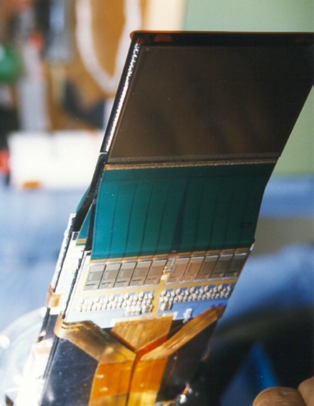ASIC laboratory Heidelberg
Content
Read-out electronics for microstrip elementary particle detectors
Today, modern elementary particle physics experiments are confronted with the problem to process enormous amounts of data to detect the tiny effects that yet have a big impact on our overall picture of the universe. This problem is solved by using highly integrated microelectronics.

|
The ASIC laboratory at Heidelberg developed the Helix pipelined read-out chip which amplifies the weak signals of so called micro-strip particle detectors. The chip can store them for some time before sending relevant data to the data acquistion system. A single chip reads out more than 100 channels, stores the signals for up to 12us before it sends the relevant data to the data acquisition system at a speed of 40MHz. The HERA-B experiment at DESY, Hamburg, reads out more than 300,000 data channels at a data rate of over 3TeraByte/s. Since detectors and chips are integrated into the smallest possible space, the chips are directly mounted on a carrier. The picture shows a silicon microstrip detector module, developed by MPI for nuclear physics at Heidelberg and MPI for physics at Munich. Two detectors can be read out on both sides and integrate together 4608 channels in a module of 10cm by 10cm. |
Besides HERA-B, the chip is also used by other experiments like ZEUS and HERMES.
Further information about the Helix chip can be found here.
